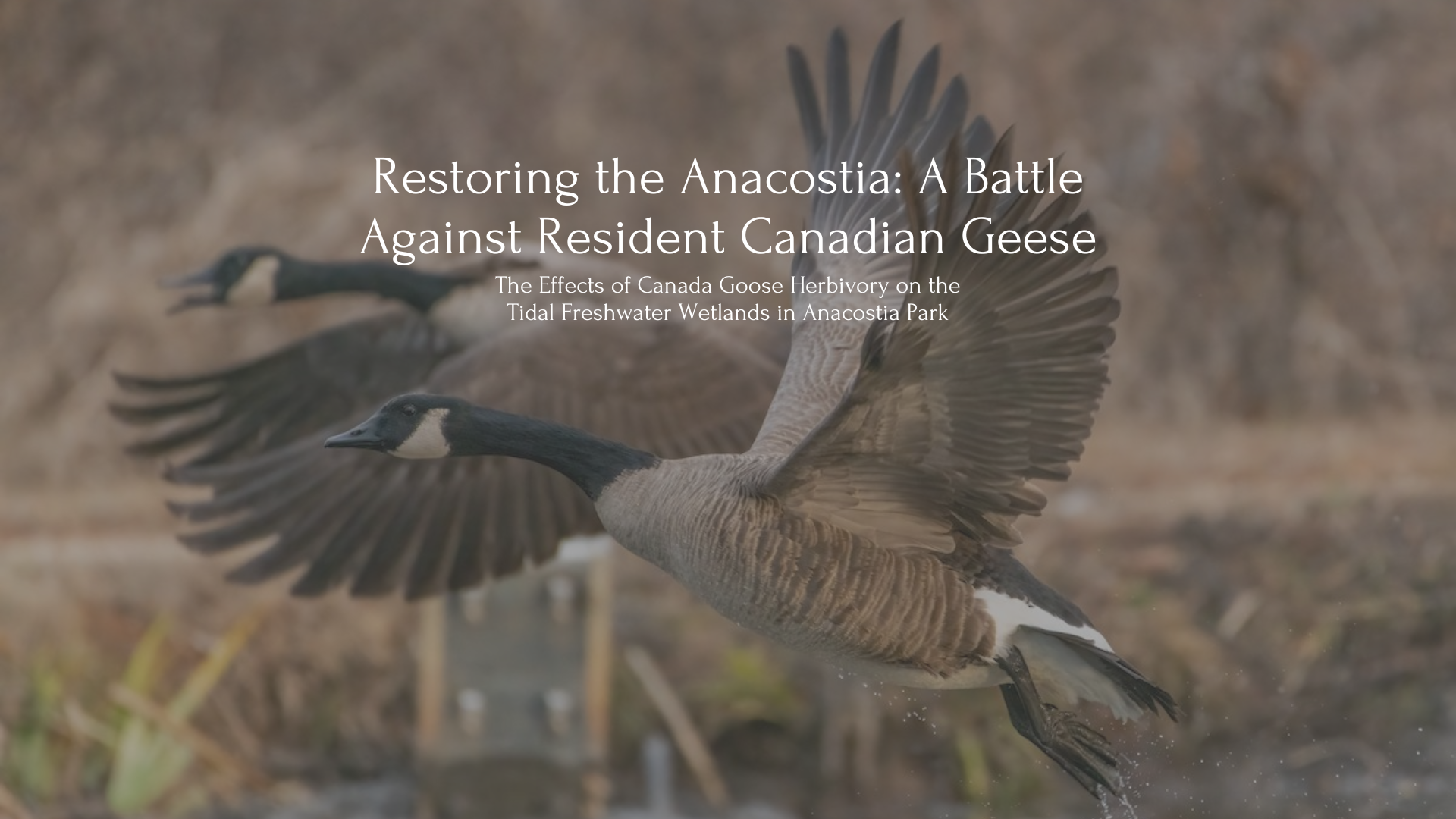The National Park Service (NPS) approached GW Biology Professor Keryn Gedan in 2018 when they were searching for a new partner to work on monitoring the vegetation of Kingman Lake during their tidal freshwater marsh restoration project. Gedan brought PHD student Justus Jobe into the project and the two of them worked in collaboration with the NPS on monitoring newly planted wetland vegetation in areas where resident Canadian geese were living. Kingman Lake and Island, located on the Anacostia River, were historically a region of Washington DC home to a thriving wetland, however urban development in the city led to the wetland being drained. The draining of this wetland allowed the city to build in this area and property values increased at the cost of diminishing the ecological value of the lake and wetlands.
In the early 2000s the NPS initiated the Kingman Lake Restoration Project by planting native vegetation in the area. However, the effort was quickly thwarted by resident Canadian geese. Unlike their migratory counterparts resident geese remain in the area year-round, consuming all of the plants NPS hoped would restore the wetland, and leaving the land barren.
The resident geese problem began in the 1970s and 1980s when geese were introduced to the Atlantic coastal regions from the Mississippi flyway to bolster declining populations. Unfortunately, many of these geese lost their migratory instincts due to prolonged captivity and the favorable local conditions, such as abundant vegetation and mild, warmer winters. Traveling from Quebec to warmer climates takes a lot of energy. Without the need to travel thousands of miles the resident geese have extra energy to reproduce and raise their young. This, coupled with climate change making the area warmer, further contributed to their sedentary behavior, as well as caused other migratory geese to stay in the area becoming resident geese.
The NPS believed that by removing the resident Canadian geese the native wetland plants would be able to thrive and help restore the wetland to its former glory. Experiments conducted by the NPS, Gedan, and Jobe proved this hypothesis. Fencing off and excluding the geese from certain areas allowed the newly planted vegetation to thrive, while unprotected areas remained barren.
Recognizing that the resident geese were prolonging efforts to revitalize the wetland the NPS began monitoring the geese. Surveys conducted by the NPS concluded that around 400 resident geese lived along the Anacostia River, and that in order to mitigate damage to the vegetation these geese would need to be relocated, ideally in the summer months when no migration was occurring. The challenge of handling the geese population was compounded by federal regulations that protect these birds. Although this population does not migrate, they are still classified as a migratory species, making them subject to federal protections. This limited the Fish and Wildlife Service’s (FWS) ability to address the issue directly. As a partial solution the FWS established a hunting season in September, targeting the resident geese before the migratory flocks arrived in the region.
Public outreach has been a critical component of the NPS strategy, seeking community input on population control measures. After six to seven years of sustained efforts, the resident geese population in Kingman Lake has been reduced to zero, allowing the marshland to begin its recovery. Native plants, including wild rice—once prevalent along the Anacostia River—are making a comeback.
This restoration project not only aims to revive a crucial wetland ecosystem but also highlights the complex interplay between human intervention and wildlife management. The success at Kingman Lake serves as a model for other urban wetland restoration efforts, demonstrating the importance of adaptive management and community engagement.
The vegetation restoration project which began in the early 2000s, and the goose exclosure experiment which began in 2009, though vastly different in scope, both contributed to the restoration of this ecosystem in Washington DC. This project has benefited the GW community greatly as Kingman Lake is a local field site accessible by car and metro to students. The restoration of this vegetation in the marsh has led to students having the opportunity to participate in ecology research as well as science communication projects for classes and journalists in Planet Forward.


